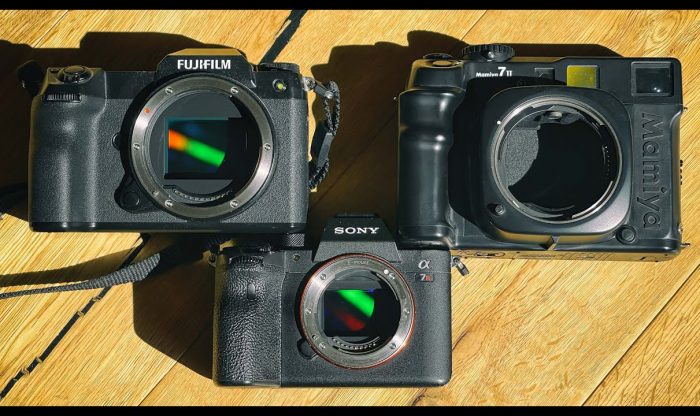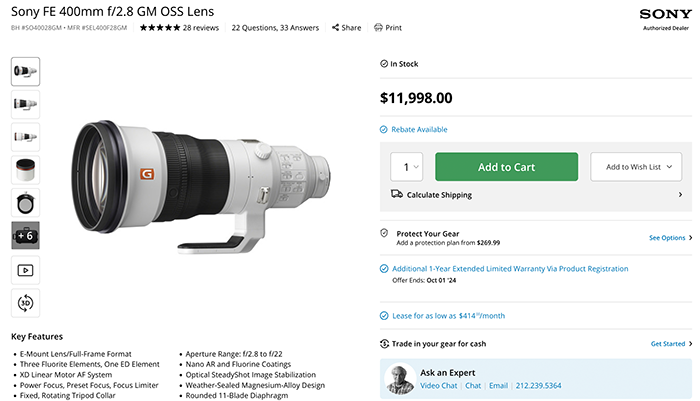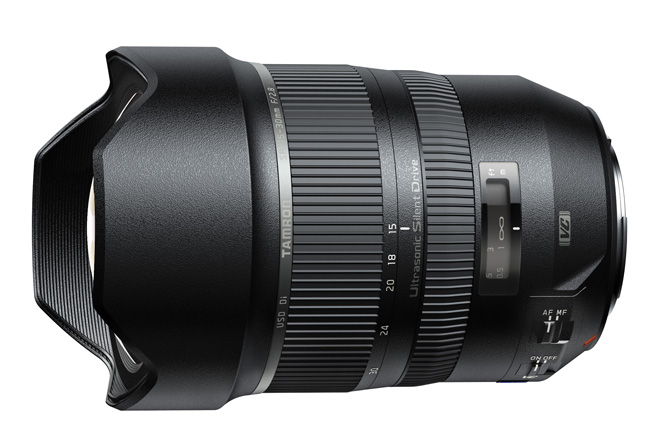Tamron announces the development of the 15-30mm f/2.8 A-mount lens.
Tamron announced the development of that great 15-30mm f/2.8 Full Frame A-mount lens. Full press release here:
TAMRON ANNOUNCES DEVELOPMENT OF F/2.8 FAST ULTRA-WIDEANGLE ZOOM LENS WITH VC (VIBRATION COMPENSATION), WORLD’S FIRST IN ITS CATEGORY
SP 15-30MM F/2.8 DI VC USD(MODEL A012)
XGM (eXpanded Glass Molded Aspherical) element and LD (Low Dispersion) glass elements deployed in the front group ensures outstanding image depicting performance. Proprietary eBAND[3] coating coupled with improved BBAR coating efficiently reduces ghosting and flare inherent to wideangle focal lengths to an absolute minimum.
[1] VC (Vibration Compensation) is Tamron’s proprietary image stabilization mechanism.
[2] For fast aperture ultra-wideangle zoom lenses compatible with full frame format D-SLR cameras. (As of August 29, 2014, based on Tamron’s research)
[3] The eBAND (Extended Bandwidth & Angular-Dependency) Coating is a new nanotechnology-based coating technique developed by Tamron to reduce unwanted reflection.
September 12, 2014, Saitama, Japan. – Tamron Co., Ltd. (President & CEO: Morio Ono), a leading manufacturer of precision optics, announces development of a new ultra-wideangle zoom lens for full-frame DSLR cameras with a fast F/2.8 aperture and VC (Vibration Compensation), the world’s first in its category. The price and launch date are to be determined. The lens will be showcased at the Tamron booth at Photokina 2014, September 16- 21, 2014 in Cologne, Germany (Photokina Booth Number:Hall 4.2 D10 – E19).
Since 2012, Tamron has been expanding its lineup of interchangeable lenses for 35mm full-frame DSLR cameras. SP 24-70mm F/2.8 was the first in the series, being integrated with VC, followed by the 70-200mm F/2.8, 90mm F/2.8 Macro, and 150-600mm F/5-6.3. The array of those new lenses have been highly acclaimed among the photo enthusiasts and working pros around the globe. To address the needs for more towards the wider angular field, Tamron spearheaded the development of SP 15-30mm F/2.8 Di VC USD, a fast ultra-wideangle zoom lens with the image stabilization feature, setting itself apart from the rest of zooms in this category.
Product Highlights
Superb image quality and performance
With an optical construction of 18 elements in 13 groups, inclusive of XGM (eXpanded Glass Molded Aspherical) element placed at the front group and several LD (Low Dispersion) glass elements in the system, aberrations such as geometrical distortion and lateral color are efficiently compensated for enabling the zoom lens to deliver outstanding image quality throughout the entire range from corner to corner.
Prominent competence of VC when shooting night scenes and under low light conditions
Recognizing the needs for image stabilization capability on a wideangle lens voiced by a number of photographers, especially for a full-frame, fast F/2.8 ultra-wide-angle zoom lens category, VC is tuned for providing discernible competence throughout the entire zoom range. The feature enhances image depicting capabilities for shooting night scenes and under low light conditions.
Benefit of the eBAND and the improved BBAR coatings
Tamron’s acclaimed BBAR (Broad-Band Anti-Reflection) coating is further refined to render uniformity in transmissivity across the critical bandwidths. Coupled with the eBAND coating, ghosting and flare typically observed on ultra-wideangle lenses are efficiently eliminated, resulting in crisper and crystal-clear images.
Fluorine coating on the front element, Tamron’s first
Due to the large diameter and the prominent convex profile of the front element, it is not practical to deploy a protective filter. For the first time, a fluorine coating is applied to the front element, which repels water or any type of dirt, while making it easier to remove such smudge when contaminated.
Fascinating background “bokeh” with the fast maximum aperture of F/2.8
Natural and smooth blur on the subject background enhances depictive capabilities of wide-angle photography when a subject is located in the close distance. The 9-blade diaphragm construction retains a near-circular aperture opening even when stopped down by two steps from its full open position and delivers ideal bokeh effects.
Easy-to-use autofocus
Speed of autofocus and control accuracy are further improved. USD[4] (Ultrasonic Silent Drive) delivers tack-sharp images due to the high torque and fast response speed with least amount of lag time, yet with extremely low acoustic noise. Equipped with a full-time manual focus mechanism, fine focus adjustments are enabled without exiting from the AF mode.
Comes with “SILKYPIX Developer Studio for Tamron”, RAW image processing software customized for Tamron SP lenses
The SILKYPIX Developer Studio software provides an added feature to generate high-quality images from RAW data, while performing adjustments to reflect a personal style and a taste of the photographer. These include white balance, color, sharpness, and the tonal curves recorded by digital cameras.
The SILKYPIX Developer Studio for Tamron provides a range of functions, in addition to the basic adjustment capabilities, such as correcting aberrations (lateral color, distortion, relative illumination fall-off) referring to the optical design data. Optimal use with Tamron’s SP series lenses – renowned for their high-depiction capabilities – delivers images that meet photographers’ most exacting demands.
[4] USD (Ultrasonic Silent Drive) is Tamron’s proprietary ring-type ultrasonic motor.
Detailed Feature Explanation
VC (Vibration Compensation)
VC (Vibration Compensation) is Tamron’s proprietary image stabilization system. Tamron’s VC is a three-coil system, whereby three driving coils activate the shake-compensating VC lens group electromagnetically via three ceramic ball bearings. The VC lens elements are held in place only by contact with the ceramic ball bearings, achieving smooth movement with little friction. And since the VC mechanism is moved in parallel using only the motorized control, the mechanical structure has been simplified, enabling the development of a more compact lens.
The Ultrasonic Silent Motor (USD)
In the ultrasonic motor, a piezoelectric element arranged in a ring formation generates ultrasonic vibrations in a metallic ring stator, and the vibration energy is used to rotate a metallic ring rotor that is attached to the stator. The rotation energy is in turn transferred from the metallic ring rotor to operate the focusing mechanism of the lens.
eBAND (Extended Bandwidth & Angular-Dependency) Coating
eBAND Coating, developed by Tamron, is a new coating technique that radically improves anti-reflection properties. A nano-structured layer (1nm = 1/1,000,000mm), with dimensions smaller than the wavelengths of visible rays of light, is deployed on top of multiple coating layers to maximize efficiency.
Reflections occur at the interface between the lens and the air because of the difference in refractive indices of the two substances. The nano-structure of the eBAND Coating renders an extremely low refractive index by minimizing the differential with that of air while actively inducing air to its own structure, thus significantly suppressing the extent and degree of reflections.
In addition, a total anti-reflection efficiency at the lens surface is further improved by means of integrating the conventional coating technique based on an active utilization of the “interference of light” principle, attenuating an amount of reflections by overlaying reflected light on the coating front surface and that of the back side with its phase shifted, thus increasing the net transmissivity.
As a hybrid technology between the newly developed nano-structured layer with an extremely low refractive index and conventional multiple-layer coatings, the eBAND Coating provides superb anti-reflection performance, delivering crisp, razor sharp images, and remarkably eliminating the flare and ghosting that can tangibly damage image quality.




